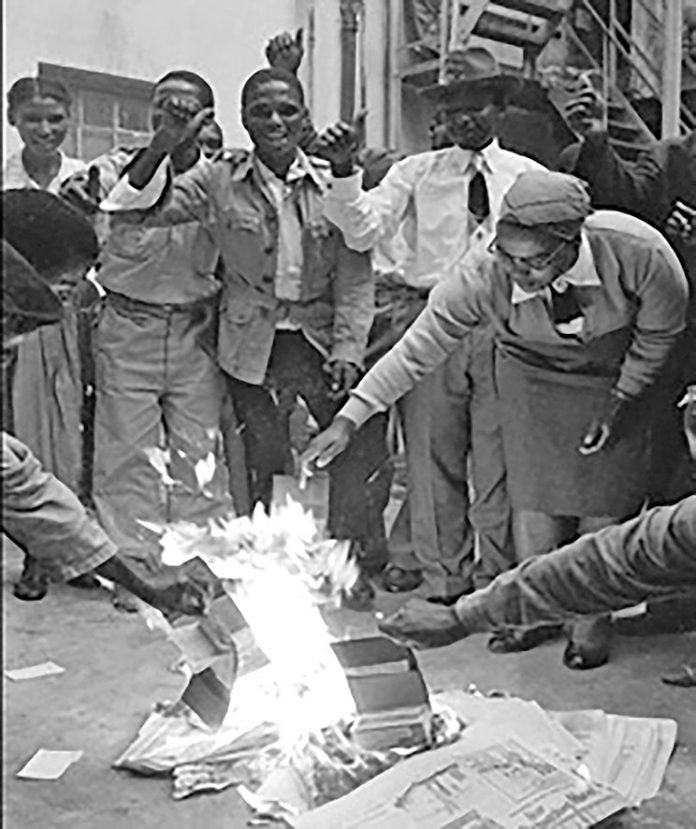This article seeks to locate the events leading up to the historic September 3 1984 Vaal rent uprisings in a proper historical context.
The final rent boycott of that day was no spontaneous eruption but a systematic consequence of tireless organisational efforts by the indefatigable activists of many political hues.
The fertile political ground in the Vaal aided in germinating the seed of defiant revolt that reverberated throughout South Africa.
The actual events of the day and subsequent ones have been ably annotated and elaborated on by Thulani Kunene, the ANC regional chair in his must-read and insightful article titled; 3rd: September 1984; History written in blood, sweat and tears.
He answers the questions of how things unfolded. I focus on causality, whereas he deals with consequences.
The area that came to be known as the Vaal Triangle is steeped in resistance history. It comprised three towns, Vereeniging, Sasolburg and Meyerton. Vereeniging was the anchor town, established in 1882 after the discovery of coal deposits along the banks of the Vaal River.
Evaton was established in 1905 as a freehold rights area after Paul Kruger allowed for the sale of land to Africans.
The farm belonging to Landjobber Easton and Mrs Adams called Wildebeesfontein was parcelled into 2 633 stands of which 833 were bought by whites and 1 800 by Africans. Whites settled in Residensia and Africans in Evaton and Small Farms respectively.
Fast forward to July 24 1955, the Evaton Passenger Service raised bus fares to Johannesburg. This resulted in frustration and anger that exploded into a cataclysmic resistance that lasted until 1956. This anti-bus fare increase campaign was led by the ANC Youth League, whose young leaders included Joe Molefi, ZB Molete, David Sibeko, Gaby Sandamela and Vusi Make. Make later married the famous American writer, Maya Angelou.
The people of Evaton opted to walk for about 59km to Johannesburg for 17 months in a defiant struggle. The Azikhwelwa! Hadipalangoe, “We don’t ride them” campaign became a great success, and the bus company capitulated.
Evaton activists were instrumental in organising and recruiting people in Sharpeville to protest against pass laws. Nyakane Tsolo, who led the March 21 anti-pass campaign in Sharpeville, frequented Evaton, where he met Sibeko, Make and Sandamela, who had broken away from the ANC to form the PAC. Sibeko was the Vaal regional PAC chair.
With the Sharpeville massacre, in 1960, scores of activists in the Vaal were arrested, exiled and many more died in a hail of bullets. The Vaal set the pace of resistance struggle, ushering a new era of exile and the banishment of political organisations.
The Vaal gave birth to the armed struggle, and precipitated the diplomatic offensive against apartheid. Apartheid was declared a crime against humanity by the United Nations, all thanks to the heroes of Sharpeville.
The climate of revolt was accentuated by the ascension to power of PW Botha, who succeeded John Voster in 1979. In 1980 on June 1, a unit of Umkhonto Wesizwe that comprised David Speech Moisi, who was from the Vaal, launched a blistering attack on the Sasolburg oil refinery and Natref.
This event revived the youth militancy in the Vaal and became the subject of songs and militant slangs. “Natsi i Sasolburg uvu’thumlilo” became a rallying song.
The formation of Cosas in 1979 saw the establishment of its Vaal region in 1980.
Its inaugural executive comprised Samuel Nkodi, Lucky Twala, Goodman Seahluli and Gcina Malindi, to mention but a few.
The proliferation of high schools in the area between 1979 and 1984 availed an army of disgruntled high school pupils whose militancy was harnessed by Cosas’s bellicose message and militancy.
The apartheid system faced the sterner and most sustained resistance from the community of the Vaal under the leadership of the Vaal Civic Association.
What was supposed to be localised resistance against rent increases catapulted and culminated in a national revolt.
The Tricameral Parliament Bill that was proposed by racist cooperation and development minister Piet Koornhof saw the release of pent-up anger that helped fuel the crises further. Cosatu embarked on a One Million Signature Campaign and the Vaal played a pivotal role with many signatures.
The success of the Vaal Rent Boycott stems from sustained and principled unity between all the progressive formations.
These included trade unions, Cosas, civic associations, and religious bodies. It was this unity in action that saw the mobilization of the entire region.
The Sharpeville Six marathon trial, the Delmas Treason Trial, Robben Island, the exile epoch, civil disobedience, mass demonstration and insurgency attacks were all the hallmarks and consequences of the epoch-making Vaal September 3 Rent Uprising.
The cardinal feature about the September 3 uprisings was that it closed the chapter of the days of oxwagon politics, where Africans were prevailed upon to administer their own damnation.
It heralded an era of sustained ungovernability that resulted in the unbanning of political organisations and the release of political prisoners.
- Ka Plaatjie is director: Pan African Foundation

Follow @SundayWorldZA on Twitter and @sundayworldza on Instagram, or like our Facebook Page, Sunday World, by clicking here for the latest breaking news in South Africa. To Subscribe to Sunday World, click here



